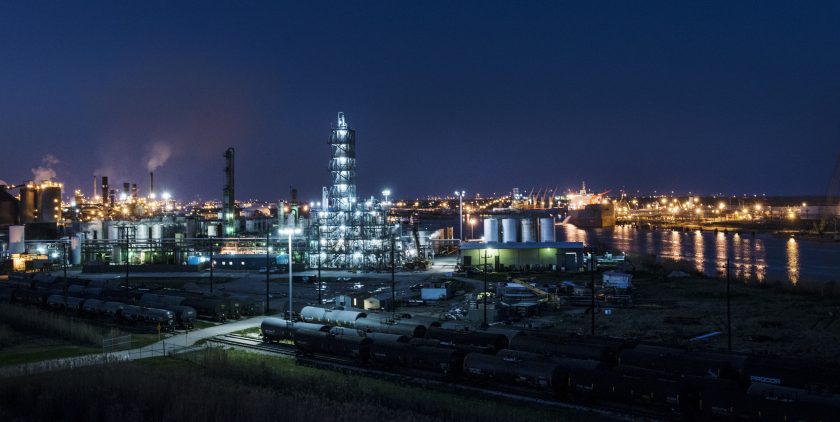Gulf Coast Carbon Hub
October 29, 2021

Carol M. Highsmith
The stage is set for a new carbon storage economy to emerge along the Gulf Coast, according to a study led by the Bureau of Economic Geology, with the region offering ample opportunities to capture and store carbon.
Carbon capture and storage, or CCS, is a technology that keeps CO2 out of the atmosphere by capturing emissions and storing them deep underground. It can help fight climate change by lowering industrial emissions now while renewable energy sources are being developed, said the study’s lead author, Tip Meckel, a senior research scientist at the bureau’s Gulf Coast Carbon Center.
“This is a viable way to reduce emissions in the near term,” Meckel said. “It’s feasible and has a reasonable economic structure that can support, retain and create jobs.” The study, which was published in May 2021 in Greenhouse Gases: Science and Technology, provides a high-level overview of policy incentives for CCS and how Texas and Louisiana’s high concentration of industry and unique offshore geology make the region a particularly good spot to build up a carbon storage economy.
In the past, oil and gas companies primarily used CCS for enhanced oil recovery, which allows companies to get more oil out of depleted reservoirs by pumping in CO2. Enhanced oil recovery has been in use for decades and has produced an existing network of pipelines for transporting CO2 along the Gulf Coast.
However, the study shows that falling oil and gas prices and an increasing 45Q federal tax credit, which offsets tax liability for industries to different degrees depending on how the CO2 is stored, is making carbon storage for its own sake more attractive.
While the geology and infrastructure of the Gulf Coast is a winning combination for boosting a carbon storage economy, the study said that another important fact is simply the amount of CO2 produced in the region. Texas has the highest level of emissions of any state. Louisiana is second.
Capture and storage offers a way to stop a portion of those emissions right at the source, Meckel said. By doing that, the technology can help flatten CO2 emissions as lower-carbon energy alternatives mature in the market.
Back to the Newsletter